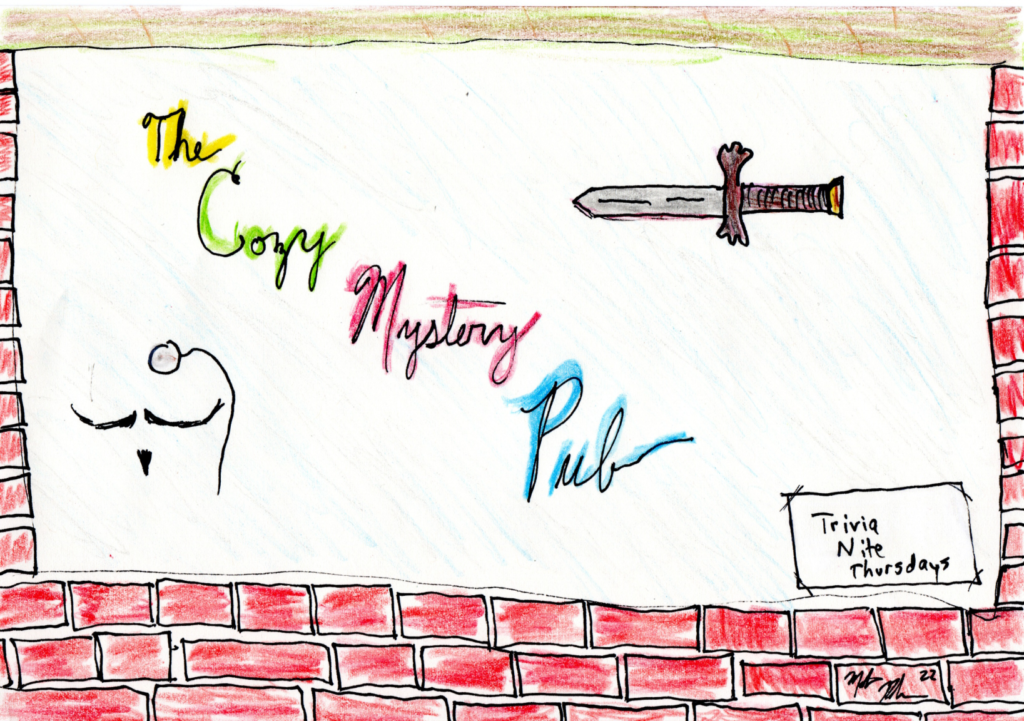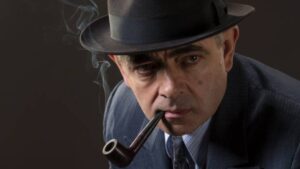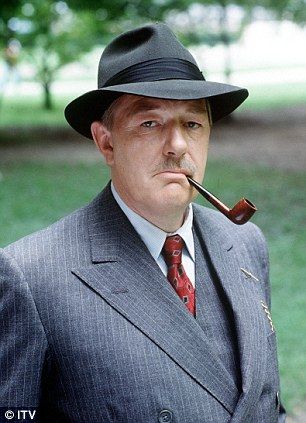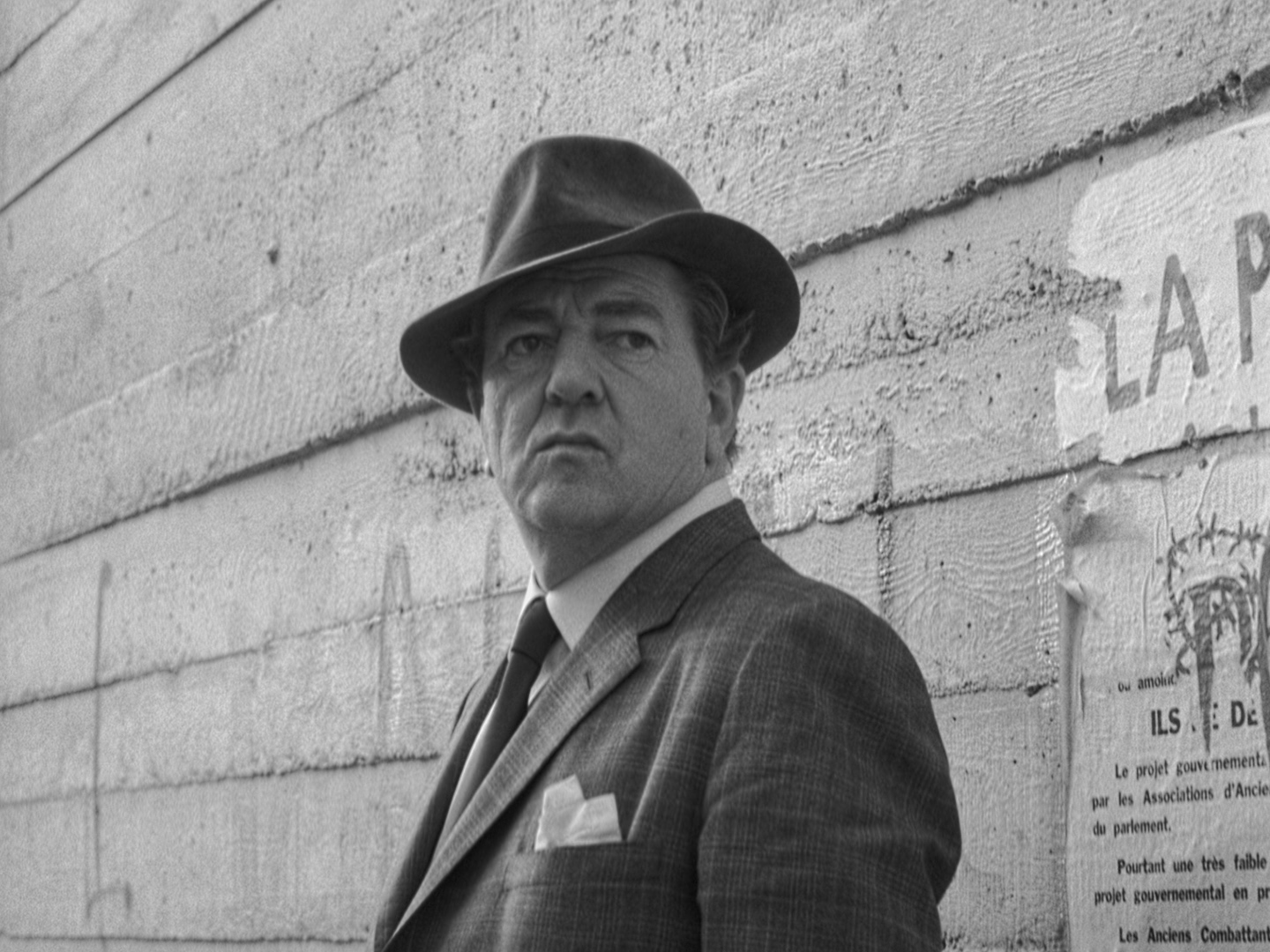
Jules Maigret is surely the most famous literary detective who remains a relative unknown in the United States. He’s a mononym like Sherlock or Marple or Barnaby, but it took a chance visit to the Mystery Lovers Bookshop in Oakmont for me to discover him, and outside of my wife and myself, I have not met many other Maigret fans. As written by French author Georges Simenon, the stories are sleek and efficient, the plotting intricate, the inner life of characters conveyed in dialogue. Truly a wondrous author. And the setting is interesting and dynamic: Paris after WW1 through the middle of the Cold War is a time of tremendous upheaval and change as the city modernized rapidly, placing characters like Maigret (and Jacques Tati’s Monsieur Hulot) in between two worlds.
Penguin Classics has a recent, excellent translation series of Simenon’s novels, and these are readily available at big box stores like Barnes & Noble, although I prefer to steer you toward the aforementioned Mystery Lovers Bookshop or to used book sellers like Duncan Comics in West View or your local Half Price Books.
This site is primarily a moving pictures site, though, and while I wholeheartedly recommend reading Simenon’s books, I’m here to talk about the adaptations of his works into movies and television. There are a tremendous number of adaptations, some easier to find than others.
ZHOOL MAG-ray
First, you should have an idea of Maigret. He’s a Commissioner for the Paris police force, having moved there after growing up in the countryside. There are three famous things about Maigret. He has a devoted and insightful wife, generally spoken of as Madame (Mme.) Maigret. He is world-weary but 100% devoted to his job. And three, the man smokes a pipe all the time. Even more so than the various drug and alcohol habits of Sherlock Holmes, the pipe is indelibly linked to Maigret’s image. Simenon’s Maigret is also large-framed and mixes it up with criminals in some of the stories, but he chiefly works the files, works the witnesses, and makes big gambles to solve the crime. His daring keeps the stories fresh, because readers aren’t just trying to guess the culprit, they are also guessing at how Maigret will catch them.
Books
Georges Simenon wrote 75 Maigret novels from 1931 to 1972, and the prose is beautiful and tautly paced. We own about 30 or 40 of the books, and none is longer than 200 pages. The titles are similarly lean, much like Agatha Christie’s works: Maigret Goes Home; Lock No. 1; Maigret Sets a Trap. What I like most, at least about the ones I have read, is that the casual racism of Ian Fleming’s Bond books or other contemporaries is mostly absent. The stories focus chiefly on the working and middle classes in France and the crimes in the books stem from the problems we expect from urban life in an industrialized capitalist world. But the methodology of the police department is fascinating because it uses technologies of the time. There is no shortage of paperwork and documentation; telephones and radios help with strategizing; cars provide swift transport. So while the crimes of jealousy and greed are eternal, seeing them solved with era-specific skills is fascinating.
POWER RANKINGS
Each show had the occasional bum element, but I was pleased to find that there were no bad Maigrets in the bunch. The Davies show felt so much of its time in being staged as though for the theater, the Cervi show was over-lit and the Atkinson locations too clean. But the titular performances were good in all of them, and each iteration was enjoyable. And most of these are accessible via streaming services like Amazon Prime and BritBox.
(NOTE: The performances of Kinya Aikawa, Richard Harris, and Jacques Renoir are not ranked due to lack of availability or lack of time. Per wikipedia, the Japanese adaptation of Maigret was well-liked by Simenon, particularly the actress playing Mme. Maigret. I would love to watch those episodes should they ever come to US streaming services.)

#6. Gino Cervi
Le inchieste del commissario Maigret (1964–1972)
I do not understand much Italian, and I confess that I could only access Cervi’s show via YouTube with no subtitles. However, I think that he’s a fine Maigret, if a little too stiff. The mustache also throws me off, but he does wear a bowler hat as mentioned in the books, which differentiates him from the other portrayals.
Honorary: The right hat: A+
Pipe-smoking: A-
World-weariness: D+
Overall Maigret: C

#5. Rowan Atkinson
Maigret (2016–2017)
Atkinson is a legendary comedic actor (Blackadder; Mr. Bean; Johnny English; Zazu the bird in The Lion King), so I had a little trepidation when this series was announced. I was not concerned that he would Bean it up, but more worried that he’d overcommit to the bit and it would be some grimdark thing. There was little to worry about, thankfully. I quite like Mr. Bean as Maigret… but it isn’t really Maigret. His performance skews toward exhaustion and melancholy, but lacks the working-class ruefulness to balance it out. And despite the biggest woolen overcoat they could find, he lacks the physicality that I think of with Maigret. This adaptation also follows prestige TV trends of the time, and lighting is warm and lush, clothing is impeccable, and the outdoor scenes too clean.
Madame Maigret, played by Lucy Cohu, is my favorite, though. She is quick-witted and tolerant of Maigret’s quirks, providing a perfect partner for the detective. Great casting, although the age gap with Atkinson is a noticeable. It should come as no surprise that Atkinson is an ace with the pipe. His propwork as Mr. Bean and Johnny English is phenomenal, and here he is even good at making the lighting of a match seem dramatic.
His series was short-lived but not short in runtime, comprising four TV movies across 2016 and 2017. This includes the one story that is in every Maigret adaptation, Maigret Sets a Trap, as well as Maigret in Montmarte, Maigret’s Dead Man, and Maigret at the Crossroads.
Honorary: Reminder that comedy is often harder than drama: A+
Pipe-smoking: A
World-weariness: C+
Overall Maigret: C+

#4. Michael Gambon
Maigret (1992–1993)
Gambon’s Maigret is a little too jovial for my tastes. He seems to be having a good time playing the role, which I can’t fault. Good for him. It would be fun as hell. But he doesn’t have the physicality of Gabin or Cremer despite his height. However, his episodes are quite enjoyable, with a higher quality of production than one would expect from late 80s/early 90s television. Gambon’s famously odd vocal delivery is further twisted around his pipe. He gets high marks for prop work between his pipes and his overcoats, which look like he’s slept in them.
Honorary: Wrinkled clothing: A+
Pipe-smoking: B-
World-weariness: A+
Overall Maigret: B-

#3. Bruno Cremer
Maigret (1991–2005)
Here we finally have a Frenchman playing the famous Frenchman. I only knew Bruno Cremer from Sorcerer (1977), but I really like him in that movie. He has watery eyes that give more compassion to the character than any other performer. I like that aspect. He is also a big, burly man, more in line with the country kid turned policeman of the novels.
Cremer had a long run as the detective inspector, with fiftysome episodes across fifteen years. His tenure overlapped the Gambon era in England, and this makes me wonder if there were ever other fictional detectives who one could watch on two different, concurrent shows.
Honorary: Sad eyes: A+
Pipe-smoking: B-
World-weariness: B+
Overall Maigret: B+

#2. Rupert Davies
Honorary: Paperwork: A+
Pipe-smoking: A
World-weariness: C+
Overall Maigret: A-
#1. Jean Gabin
Maigret Sets a Trap (1958); Maigret et l’Affaire Saint-Fiacre (1959); and Maigret voit rouge (1963)
Gabin is the best filmed portrayal of Maigret. For starters, of those in this list, he is the closest in age to the character and author. Gabin served in World War II, as did many of his costars in these films, and frankly postwar Paris being the setting for postwar Paris means that these movies get the vibes right. (It should be noted that Davies also served in WWII. –Ed.) I can’t oversell this point. Maigret and Mme. Maigret live in a 1950s Paris house, which is in that Jacques Tati interzone between old Europe and modern Europe. The clothing and music is of the time, which gives it a tactility missing in something like the Rowan Atkinson Maigret, which matches the ambience but is too lush and polished.
But looking beyond the fact that Gabin was a world-weary actor who had faded in the public eye prior to taking the role, he has this great raspy bass voice and a twinkle in his eye that help define the role. So much of Simenon’s novels are about Maigret’s ability to scheme and gamble on hunches, and Gabin nails it. In Maigret Sets a Trap, for instance, his interview of the suspects and witnesses is brilliant, using the information garnered from one to set logic traps for the next. It called to mind Ed Exley (Guy Pearce) in LA Confidential (1997), albeit with far less shotgunning.
Madame Maigret is underserved in these movies. She has a small role in the first, is absent while Maigret is in St. Fiacre, and is back to cameo duty in the third film. The actress is not to be blamed for the part, as she plays beautifully off of Gabin for the scenes that they have.
Honorary: Smoker’s rasp: A+
Pipe-smoking: B-
World-weariness: A+
Overall Maigret: A
